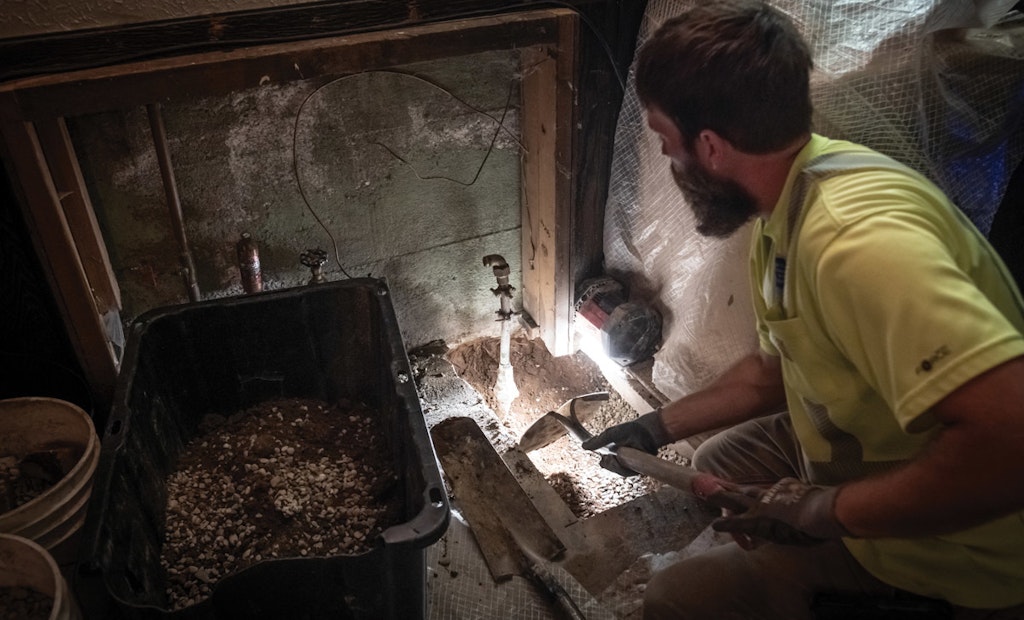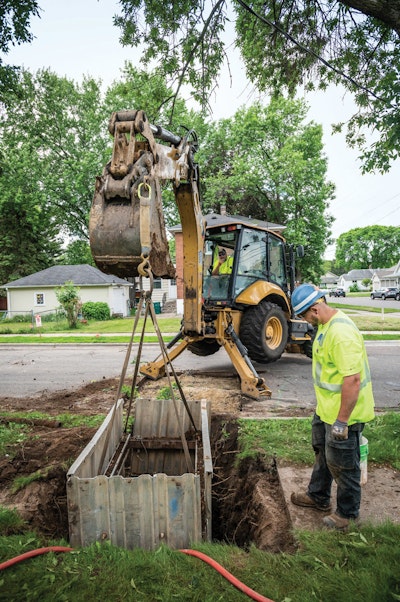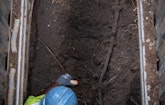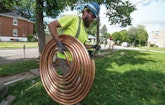
A St. Paul Regional Water Services crew member exposes a lead water line in the basement of a house so it can be replaced with copper. (Photography by Caroline Yang.)
“Get the lead out” is an idiomatic expression meaning to hurry or speed up the pace of work. The expression applies doubly to St. Paul Regional Water Services, which is quickening the pace of its efforts to rid the system of lead pipes.
“When I joined this organization,”...









